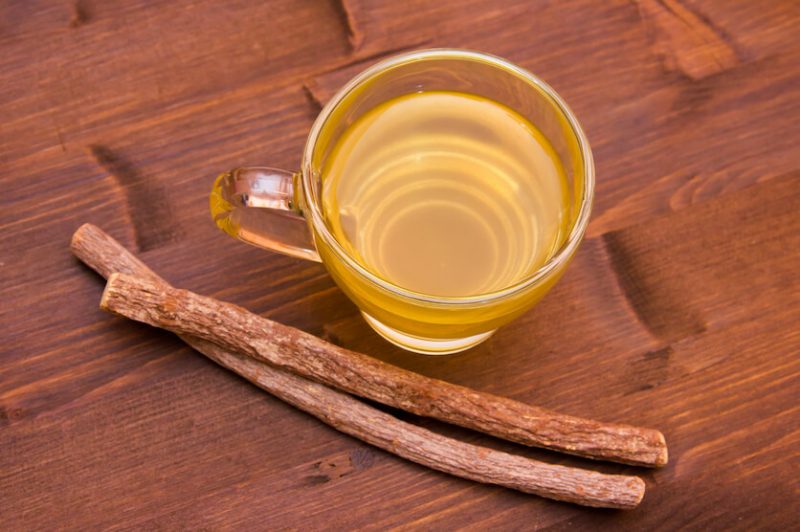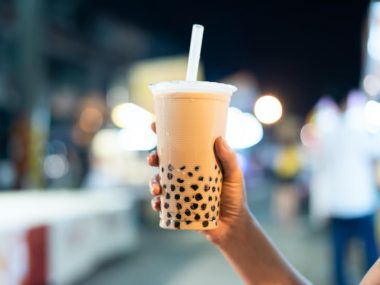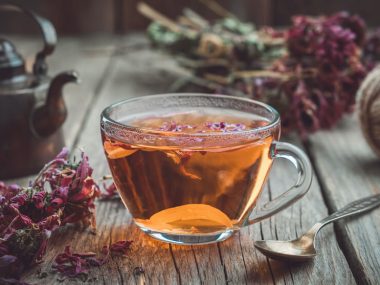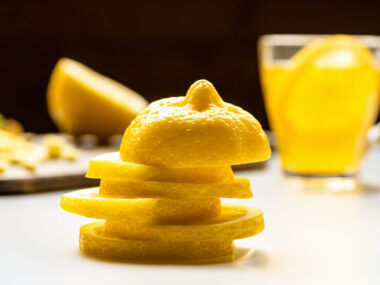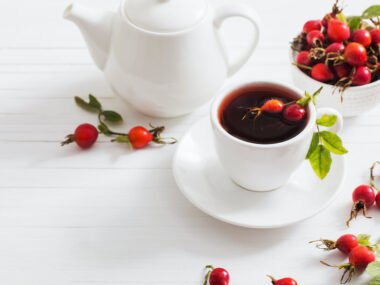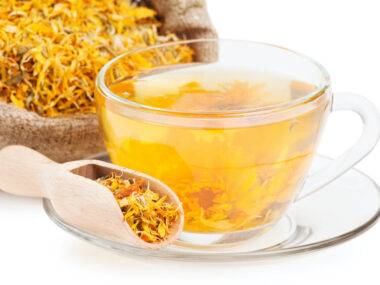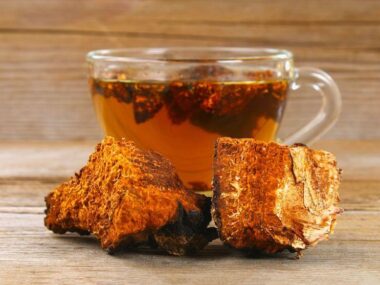Despite a delicious-sounding name an extra sip or cup or two of this tea might land you in the hospital. You’ll definitely want to read this before you drink that next cup of licorice tea!
Table of Contents
What Is Licorice Tea?
Licorice tea is a tisane (herbal tea) made by brewing the root of the licorice plant. This tea is used in traditional medicine to help coughs, colds, and other respiratory ailments. But some people also enjoy it for its unique sweet-ish taste.
What Is Licorice?
Licorice is a black extract that comes from an herbaceous plant (Glycyrrhiza glabra). Most of us know licorice as the waxy rope candy we munched on as kids. However, licorice isn’t a candy but rather a flavoring made from the black extract from the roots of the licorice plant.
Licorice is native to parts of China, Spain, Italy, Turkey, Iran, Iraq, and Mongolia. However, it is commercially cultivated in Iran, Afghanistan, China, Iraq, Azerbaijan, Uzbekistan, Turkmenistan, and Turkey.
The roots of a licorice plant are a yellowish-brown color. Although the root wasn’t meant to be eaten entirely, people are known to chew on them because they are sweet. Commercial cultivators grow these plants for their roots which go on for further processing for food and tobacco products.
You’ll find that licorice is used far more in the Middle East than in westernized regions of the world. The rest of the world hasn’t quite acquired a passion for the flavor as perhaps Syria or Egypt has. Street vendors in these two countries sell a licorice-flavored beverage known as “Erk Sous.”
Licorice has managed to find its way into beers, cakes, bread, ice cream, beverages and is even used as a sweetener. Supplements with this herb are widespread throughout the herbal industry with promises of better adrenal function. Its traditional medical use throughout history continues into the modern-day.
History Behind Licorice
A few recognizable figures from the past who have used medicinal licorice include Alexander the Great and King Tut (Pharaoh Tutankamun). It’s said that Alexander the Great was the one who introduced the herb to Europe.
Licorice-flavored elixirs filled the medical kits of many healers during the Middle Ages. Licorice didn’t find its way into foods until about the thirteenth century when George Dunhill (an English chemist) produced a cake flavored with the herbal extract. Sometime in the early 1900s, licorice caught on in the food and beverage industry, finding its way into candies, baked goods, cooking, and drinks. The commercial cultivation of licorice had begun!
Today, factories dot the landscapes of many countries that cultivate licorice roots (which have been harvested.) The harvest roots then go through the extraction process. It’s in these factories that licorice extract is processed into different forms such as powder, granules, nibs, sticks, or a black tarry paste or paste block.
Root extracts are often used in the beer and fire extinguisher industries as a foaming agent. The roots also provide the fiber that is used in making insulation, boxboard, and other lumber materials.
The powder and granule forms are typically used by the tea industry to make tisanes (herbal tea.) The black tarry paste finds its way into the tobacco industry as a flavoring agent and moisture-preventative. All forms are used in many different ways by numerous industries.
Various Teas With Licorice
Licorice is powerfully sweet, and according to Edible Medicinal and Non-Medicinal Plants, this herbal root is 50-170 times sweeter than naturally occurring sucrose (found in fruits). Perhaps this is why the root extract has found its way into so many products. A tea containing licorice will inherently be sweeter than an unadulterated true tea such as black, green, oolong, yellow, or white.
Some teas that include licorice include:
- Licorice root tea
- Peppermint licorice tea
- Licorice mint tea
- Ginger licorice
- Licorice spice
- Chamomile licorice
Some tisanes (herbal tea) are marketed as “licorice” or may have licorice listed as an ingredient. This can be confusing because it may not be licorice at all but star anise instead. Star anise is used in lieu of licorice to flavor a tea. So, when in doubt, always read the ingredient label.
What Does Licorice Tea Taste Like?
The flavor of licorice is something you either like or dislike. It is a flavor unto its own and like nothing else. When asking people what licorice tastes like, you’ll be met with a diversity of descriptives. Licorice assaults the palate with an immediate familiarity of fennel or anise. As it washes over our taste buds, we get the explosive bitter sourness that finishes off with a camphoric medicinal exit that stays with you awhile.
How Much Caffeine Is In Licorice Tea?
Licorice tea is a tisane (herbal tea) and is not made from the tea plant from which true teas come from. True teas include black, green, oolong, yellow, and white, and they are made from the tea plant (Camellia sinensis.)
Licorice tea is made from the roots of an herbaceous plant species called Glycyrrhiza glabra. Herbal teas (tisanes) do not have caffeine unless a caffeinated true tea is blended in or something else is infused into the tisane, such as chocolate, Yaupon, Yerba Mate, etc.
Is It OK To Drink Licorice Tea Every Day?
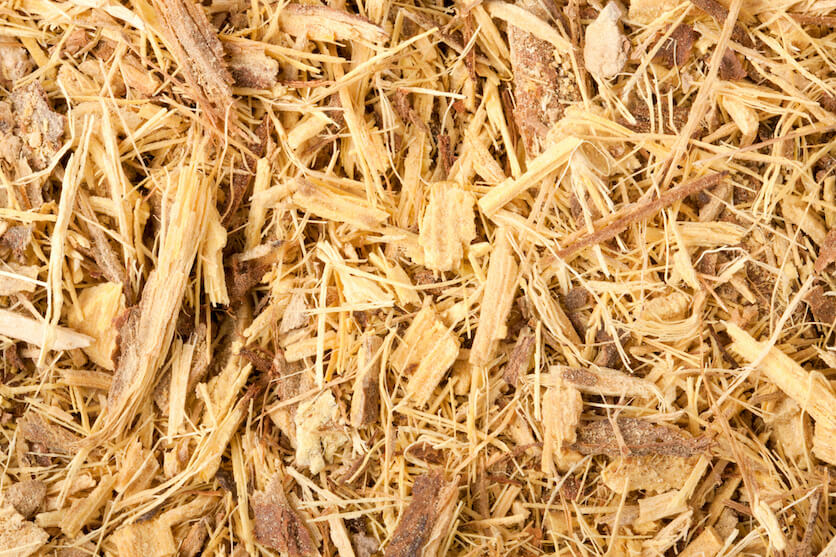
When it comes to making recommendations or providing advice on the safety of consuming any tea, we refrain from doing so because we lack the appropriate expertise. Instead, we recommend that you talk to your healthcare provider before consuming tea (especially this one) to make sure it’s safe for you.
If you have any of the following, it’s best to talk to your doctor before drinking tea:
- Medical conditions
- Taking medications (including supplements)
- Undergoing radiation or chemotherapy
- Have allergies
Teas (whether a true tea or herbal) may cause side effects, adverse reactions, interact with medications or treatment, or cause an allergic reaction. According to Edible Medicinal and Non-Medicinal Plants, 1-5 grams of licorice consumed daily is estimated as safe for most adults in good health.
Use Caution With Licorice Tea
Licorice tea comes with some warnings that tea drinkers need to be aware of. The Food and Drug Administration (FDA) has an article that warns people about a dangerous compound (glycyrrhizin) in licorice. Glycyrrhizin is the sweetening constituent in licorice. Too much can cause serious side effects, high blood pressure, congestive heart failure, and edema.
The Canadian Medical Association Journal published a case study (“Hypertensive emergency induced by licorice tea”) which mentions a patient succumbing to licorice-induced pseudohyperaldosteronism. This condition is serious and involves problems with blood pressure, metabolism, and other potentially life-threatening conditions. The patient spent 13 days in the hospital because of drinking “Erk Sous” (the Syrian licorice beverage we previously mentioned) daily for two weeks.
Does Licorice Tea Make You Sleepy?
In an article published by the University of Rochester Medical Center, one of the side effects of consuming licorice is lethargy (feeling tired.) Licorice mimics aldosterone, a hormone we naturally produce that regulates water and sodium.
What Are The Side Effects Of Licorice Tea?
The Therapeutic Advances in Endocrinology and Metabolism published a review on licorice which mentions numerous side effects from the consumption of licorice (glycyrrhizin.) The review states these side effects increase in severity for certain people predisposed for glycyrrhizin sensitivity.
Those at higher risk of more severe side effects include:
- Patients with anorexia nervosa
- Pregnant women
- Patients with high blood pressure
- The elderly
Licorice Tea Side Effects
- High blood pressure
- Heart arrhythmia (potentially fatal)
- Heart failure
- Pulmonary edema
- Embolic ischemia
- Hypokalemic myopathy stroke
- Rhabdomyolysis
- Metabolic disorders
- Asthma
- Skin irritation
- Preterm labor in pregnant women
Drug Interactions
- ACE inhibitors
- Diuretics
- Aspirin
- Digoxin
- Corticosteroids
- Insulin
- Laxatives
- Oral contraceptives
- Antibiotics
- Antidepressants
- Antithrombotics
Licorice Tea Benefits
A comprehensive research article entitled “Glycyrrhiza glabra” notes that licorice is beneficial as an expectorant, antimicrobial, hypolipidemic, antiviral, antiulcerogenic, hypotensive, antidiuretic, antipyretic, and anti-inflammatory. Moreover, it has similar activity to that of estrogen.
Constituents in licorice include triterpene saponins and flavonoids, which have a pharmacological activity that helps with ulcers, inflammation, oxidative stress, viruses, coughs, boosting memory, regulating metabolism, and whitening of the skin. Glycyrrhizin (a compound in licorice) is also found to inhibit the Hepatitis A virus.
Commercial licorice producers grow, harvest, and process two cultivars (Glycyrrhiza glabra var. Glandulifera and Glycyrrhiza inflata) which are both known to exhibit powerful antimicrobial and antioxidant bioactivity.
So, aside from the pharmacological benefits that licorice provides, what is licorice tea good for in layman’s terms? Although we can’t make specific recommendations on what licorice tea helps treat, we can mention that based on the evidence we’ve provided, licorice tea may have the potential to help respiratory conditions such as coughs, fight or ward off viruses, and more.
Licorice Root Tea Recipe
Based on Edible Medicinal and Non-Medicinal Plants’ recommendation on the same amount of licorice (per day) for a healthy adult, we have a licorice tea recipe that embodies the full flavor of licorice.
Licorice Mint Tea
Ingredients:
- ½ teaspoon of licorice root (nibs, or shredded roots)
- 2 teaspoons of loose-leaf Moroccan Mint tea
- 2 cups of water
Directions:
- Bring the water to a boil.
- Remove from the heat.
- Add the licorice to the hot water.
- Cover and allow to steep for 5 minutes.
- Place the loose-leaf tea in an infuser.
- Drop the infuser into the hot water.
- Cover and allow to steep another 5 minutes.
- Remove the cover.
- Remove the infuser.
- Strain the tea into a teacup.
- Add a bit of honey if needed to sweeten.
- Enjoy!
The “Root” Of An Evil Tea?
Licorice tea is a double-edge sword which is what makes it so controversial in the medical community. It has merit for its benefits, but on the flip side, it’s a dangerous tisane (herbal tea) that requires strict attention to moderation.
